The Hobbit: The Desolation of Smaug
 for extended sequences of intense fantasy action violence, and frightening images.
for extended sequences of intense fantasy action violence, and frightening images.
Reviewed by: Raphael Vera
CONTRIBUTOR
| Moral Rating: | Average |
| Moviemaking Quality: |
|
| Primary Audience: | Teens Adults |
| Genre: | Adventure Fantasy Drama Adaptation IMAX 3D |
| Length: | 2 hr. 41 min. |
| Year of Release: | 2013 |
| USA Release: |
December 13, 2013 (wide—3,903 theaters) DVD: April 8, 2014 |


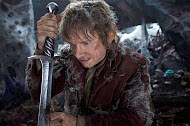
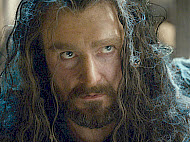
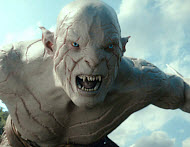


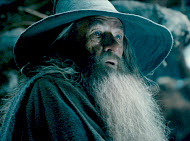
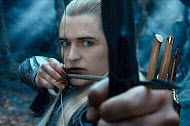
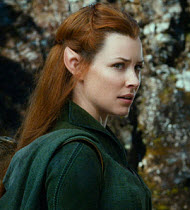
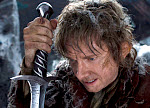
DRAGONS in the Bible
DRAGONS AND DINOSAURS—discover how they are connected
FILM VIOLENCE—How does viewing violence in movies affect families? Answer
courage / bravery
FEAR, Anxiety and Worry—What does the Bible say? Answer
wizards and sorcerers
novel: The Hobbit, or There and Back Again by J.R.R. Tolkien
The Lord of the Rings: The Fellowship of the Ring (2001)
| Featuring |
|---|
|
Benedict Cumberbatch … Smaug/The Necromancer Evangeline Lilly … Tauriel Richard Armitage … Thorin Oakenshield Orlando Bloom … Legolas Hugo Weaving … Elrond Cate Blanchett … Galadriel Manu Bennett … Azog Ian McKellen … Gandalf Martin Freeman … Bilbo Baggins Luke Evans … Bard the Bowman Lee Pace … Thranduil Christopher Lee … Saruman Aidan Turner … Kili Andy Serkis … Gollum Stephen Fry … Master of Laketown See all » |
| Director |
|
Peter Jackson |
| Producer |
|
Metro-Goldwyn-Mayer (MGM) New Line Cinema See all » |
| Distributor |
“Beyond darkness… beyond desolation… lies the greatest danger of all.”
Prequel: “The Hobbit: An Unexpected Journey” (2012) / Sequel: The Hobbit: The Battle of the Five Armies (2014)
Set in the mythological time of “Middle Earth” that began with “The Hobbit: An Unexpected Journey,” the story continues with Bilbo (Martin Freeman) aiding a party of dwarves led by Thorin (Richard Armitage) who seeks to recapture the mountain and throne of his father which was taken by the fearsome and unstoppable dragon, Smaug.
The film begins with a flashback to when the wizard Gandalf (Ian McKellen) meets Thorin for the first time and convinces him to begin the quest to take back his father’s kingdom. The task will lead them to fight both enemies known (Orcs, Goblins, Wargs) and unknown, such as the Necromancer, a dark spirit commanding unseen malevolent forces. Before this journey is over they may make enemies of some allies, but they will need to forge partnerships with elves and human alike if they are to succeed.
“The Hobbit: The Desolation of Smaug” lives up to its exciting and adventure filled predecessor and is replete with acts of heroism, faith, mercy and sacrifice amidst a backdrop of war fomented by the very real signs of spiritual warfare—greed, avarice and a thirst for destruction not so unlike our world today. So it comes as no surprise that you would expect some areas of concern in a story much grander than a typical fairy tale.
Objectionable Issues
Violence: Heavy. During battles the primary victims are the inhuman Orc’s who are sliced by swords, limbs detached (including decapitations), shot by arrows through the head and stabbed. Dwarves and Elves share in the perils and several are seen cut down in turn. Little if any blood is shown, though the results of battle are clear throughout. The mummified remains of dwarves killed long ago serve as a grisly reminder of Smaug’s assault on the dwarves’ “Lonely Mountain.”
FILM VIOLENCE—How does viewing violence in movies affect families? Answer
During a journey through Mirkwood forest, gone is some of the playfulness found in Tolkien’s book. Instead, Bilbo’s banter has been replaced by a very straightforward and fearful encounter with the giant spiders who live there which, taken by itself, should preclude younger children from viewing.
Language. Minor. When the Dwarves are taken captive and are searched, one of them, Kili, invites the lovely Captain Tauriel (Evangeline Lilly) to search down his trousers, which she promptly rejects by saying “there’s not likely to be anything there.”. A dwarf curses in his own language, so while his intent may have been clear, the words will not be understood. “Desolation…” is a refreshingly clean film in this respect.
Sex/Nudity: Mild. A “skin changer” named Beorn transforms from a beast to a man and one can see his backside (nude) in the moonlight. This is a brief scene that can be anticipated and blocked from younger eyes, it is not, however, gratuitous.
Spiritual: The occult, while not as pronounced as in the first Hobbit film still appears touched upon when a healing potion is apparently augmented by an elvish chant. The Necromancer, whose form is that of darkness and shadows, can cast spells of both great power as well as illusion, and it appears doubtful whether or not he can be defeated, but more on that later.
Alcohol. Drinking appears as a staple to almost any celebration, and one dwarf is literally drunk under the table. Lightheartedly presented, this still merits mention.
Lessons
Tolkien’s literary works contain spiritual themes and lessons of their own that run sometimes just beneath the surface, and these films, as marvelously directed by Peter Jackson, have done well to incorporate some of them. Here are just a few that I felt stood out.
Galadriel (Cate Blanchett) telepathically speaks to Gandalf and directs him to another mission. Reluctant to leave his comrades behind, he none-the-less heeds the call. How like the Holy Spirit that directs our actions when we have “walked” with our Lord daily, and He “moves us” as promised in the Word.
“I am the Lord your God, who teaches you what is best for you, who directs you in the way you should go…” (Isaiah 48:17).
And perhaps no more clearly directed than when the Spirit sent Philip to preach to a traveling foreigner that would be key in spreading the Good News.
“Now an angel of the Lord said to Philip, “Go south to the road-the desert road-that goes down from Jerusalem to Gaza. So he started out, and on his way he met an Ethiopia eunuch… The Spirit told Philip, Go to that chariot and stay near it” (Acts 8:26-29).
The dwarves have an obvious brotherly comradeship, although only two appear to be brothers, yet when one of them gets severely injured several, others quickly volunteer to stay behind to aid him, bringing to life the proverb that says,
“A man of many companions may come to ruin, but there is a friend who sticks closer than a brother” (Proverbs 18:24).
The Necromancer boldly claims to Gandalf, “There is no light that can defeat darkness!” Gandalf, in a stark example of “good” vs. “evil,” had gone to confront the enemy hiding behind a concealment spell when he commands it to stand revealed.
“When Jesus had called the Twelve together, her gave them power and authority to drive out all the demons and to cure diseases, , and he sent them out to preach the kingdom of God and to heal the sick” (Luke 9:1-2).
On more than one occasion Bilbo acts in faith, refusing to give into the apparent defeat of the moment, much to the astonishment of his friends. It is this faith that keeps this quest from failing.
Jesus said to his disciples, “…If you have faith as small as a mustard seed, you can say to this mulberry tree, ‘Be uprooted and planted in the sea,’ and it will obey you” (Luke 17:6).
As heroes go, Bilbo is perhaps the most unimpressive looking of the bunch. He is certainly no great warrior, and his companions believe they are all smarter in so many ways than this, their humble little burglar. But, just as David was chosen by God over his more seemingly “fit” brothers (1 Samuel 16:7), Bilbo is elevated by circumstances, or is it divine providence, to play perhaps the greatest hero of this story. And that’s just the way God does things.
“But God chose the foolish things of the world to shame the wise; God chose the weak things of the world to shame the strong” (1 Cor 1:27).
“God opposes the proud but gives grace to the humble” (1 Peter 5:5).
“He guides the humble in what is right and teaches them his way” (Psalm 25:9).
“The Hobbit: The Desolation of Smaug” is a well told, exciting, big, bombastic movie that I strongly recommend be seen in IMAX 3D, if possible. However, as impressive as the images of Middle Earth and the effects may be, they can’t overshadow the simply wonderful tale that it is at the heart of it, nor the characters that you can’t help but root for to overcome the desperate odds that they face. See this for the grand adventure that it is, because, with the third and final chapter coming next, all the elements for an epic battle, as well as a story of redemption, are in place for the final film… and I can’t wait!
Violence: Heavy / Profanity: Minor / Sex/Nudity: Mild
See list of Relevant Issues—questions-and-answers.


Moral rating: Good / Moviemaking quality: 4½
What I do caution those who have not seen the film or of a light heart is this film is a lot more violent than “An Unexpected Journey,” with many Orc heads being chopped off and thrown around, blood platter on the camera, and other moments I don’t remember, as almost every fighting sequence was really fast. This was a stellar film, but be careful of the crazy exploitation of violence in it.
Moral rating: Average / Moviemaking quality: 4½
Because author JRR Tolkein was a Christian (he witnessed to and led CS Lewis to Jesus Christ), I am intrigued by the Judeo-Christian symbolism beyond the story’s surface. Not sure if it was Tolkein’s intention, but I see the elves and wizards, who love the Light and act as Guardians, as analogies of angels and archangels. They often portray wisdom, forgiveness, compassion, empathy, self-sacrifice, risking their lives for others, and more. See all »
Moral rating: Better than Average / Moviemaking quality: 5
Nothing bad to say about the movie overall, just little things to prepare those of you who haven’t seen the film yet. Just as with the first part, the second part is about half and half with what’s true to the book and what’s a Peter Jackson deviation. Don’t expect to be seeing page for page adaptations to the story. The main highlights Peter Jackson sticks with he does just right, if not better in certain ways. For what he does change in how the story and characters, old and new, are developed, I believe I will know how I feel better as I re-watch the two films together. See all »
Moral rating: Good / Moviemaking quality: 4
The only real exception is the female elf who was not in The Hobbit book nor the side notes either. Peter admitted to adding her so it didn’t feel like a all male cast. Plus it added an interesting dynamic.See all »
Moral rating: Offensive / Moviemaking quality: 5
I like the scene whee the Dwarf King attacks the Dragon Smaug with a wheel barrel, causing Smaug to get covered with molten gold. It is the burning of Smaug by gold that causes Smaug to flee the Dwarf stronghold he had taken, much like how drug abuse can hurt rich criminals in real life. Smaug, delivered from his love of gold, is free to pursue other causes, and exclaims at the end of the movie, “I am fire, I am death.”
This movie is entirely pre-christian and a great exposer of secular causes outside of Christ, whether they be dwarfish, elvish, orcish or misc.
Moral rating: Good / Moviemaking quality: 5
I’ll give away only one spoiler—in the book, the dwarves barely saw Smaug, if at all. What happens in the movie is completely and utterly different. I’m actually surprised that Tolkien’s estate approved it. The movie-making itself was well done, the only complaint was that some action sequences were so fast, it was hard to take in everything that was actually happening.
Jackson’s vision of Middle Earth is nothing if not grand. If you’re in for a good show, this delivers. But, while it pulls from a multitude of sources (not only The Hobbit, but also the Silmarillion, Unfinished Tales and The Lord of the Rings and the LotR appendices), if you’re a Tolkien diehard and enjoyed “The Lord of the Rings” movies and their (mostly) faithful telling of Tolkien’s classic tale and are expecting similar treatment of The Hobbit, prepare to be disappointed. It really offers just a re-imagining of the story that basically ties into Tolkien’s mythology, with some major changes. It seems like Jackson just got tired of story telling and decided to fill in with action sequences.
Moral rating: Good / Moviemaking quality: 4½
Each titled chapter of The Hobbit is itself a didactic medium, essentially presenting us with a seemingly benign truism, such as the chapter labeled: “Out of the Frying Pan, Into the Fire.” The mere title of this chapter is an encapsulated parable of sorts, whereas another chapter title reads: “The Gathering of the Clouds” and the reader anticipates something ominous, though we are not told what it is. This is where the didactic, teaching quality, of the film diverges from the book. In this fantasy-flick we see far too much fantasy and far too little dialog, mystery, and didactic teaching strategies for young people. Unlike the Harry Potter series, the book was not supposed to be imagined as something primarily magical (and magically goofy at that). The rare instances in the book where Gandalf disguised his voice, or lit up a cave with his “staff,” and then in one other chapter did some tricks with pinecones was merely something that he did to save the lives of the hobbit and the dwarves. And, each of these things can be explained by ventriloquism, science and chemistry. No doubt flaming pinecones could be sprinkled with something as simple as gunpowder or have some strong firecrackers attached to them. See all »
Moral rating: none / Moviemaking quality: 1½
Ok, I admit the Smaug scene was marvellously done, particularly at the start. But largely this sequel was a sell-out. Come on, a love triangle involving elves and a dwarf, together with vulgar language? And the majority of the elves of Mirkwood scenes turned into some elven version of the fight scenes from “The Matrix” or fight movies of that type? And I haven’t even touched on some of the orc scenes.
Tolkein would certainly be appalled at much of this movie. A clear sell out for filthy lucre.
Moral rating: Better than Average / Moviemaking quality: 3½
Also. I became just angry to have sat through 2 hours and 40 minutes of that grossness and then have no ending resolved! Will not go see another.
Moral rating: Good / Moviemaking quality: 5
The fighting is quite brutal, but as far as I remember not more brutal than in “The Lord of the Rings.” If you see this as a spiritual fight (for also the evil and the good is portrayed seperately pretty well—although the “good” are not like “pure” for e.g., they are drinking) and also see this killing as something like a spiritual fight you can go with the Hobbit 2.
However, and now this is why rate this movie negative. The movie seemed very dark. If you are sensitive for the spiritual realm, and that’s what I believe to have felt, you see that its very dark. I especially talk of the scene where ***SPOILER*** Gandalf is fighting against Sauron. ***END SPOILER***
This was far to intense. Also, the pictures of the orcs are even more intense and frightening than in all other movies. Finally, while I can say I enjoyed all the Lord of the Rings movies and even the Hobbit 1, when I went out of the Hobbit 2 I did not want to watch this movie again, because of its darkness. As sad as it is concerning effects, story etc. I do NOT recommend this movie. Even though the THING—the movie may not be evil, the intentions and spirits that are behind the moviemaking and the application of the story may be influencial and dangerous. However, I hope the third part will be less dark and more like “The Lord of the Rings.”
Moral rating: Better than Average / Moviemaking quality: 4
Moral rating: Average / Moviemaking quality: 5
Moral rating: Excellent! / Moviemaking quality: 5
Moral rating: Excellent! / Moviemaking quality: 5
Moral rating: Good / Moviemaking quality: 4½
Wow. I’ve heard many Christians say that these movies are demonic and steeped in the occult. They aren’t. Set in the fantastical realm of Middle Earth, so it has no bearing on our world, and is not related to in any way. If anything, it clearly shows the essence of Good vs. Evil. Illuvutar, the god of Middle Earth, could be construed as an representation of god, sending his angels (Gandalf, Saruman, Radaghast) to intervene in the evil world. See all »
Moral rating: Excellent! / Moviemaking quality: 4½
“Set no wicked thing before you” is the command of the Lord. If you want to learn about good vs. Evil, simply read the Holy Bible and listen to the Word of God being preached sisters and brothers!! Our desires should line up with God’s pureness. There will be no such entertainment like this movie in Heaven. All the characters that look like the characters in these fantasy movies will be in Hell. Let us conform our desires to Christ’s and put of the old man that is the flesh.
PLEASE share your observations and insights to be posted here.

I went on the premiere day to a 2D showing, but my best friend went to see it in 3D and said lightheartedly, “Heads were flying at the audience!” I couldn’t think of a better description. Lots of heads, lots of blood, and a very dark, frightening sequence with the Necromancer’s shadow vs. Gandalf that even had ME scarcely breathing in my seat. Beorn’s hulking, snarling bear-form is also worth mentioning, and reminded me sharply of Mordu from Disney’s “Brave.” See all »
My Ratings: Moral rating: Better than Average / Moviemaking quality: 4½